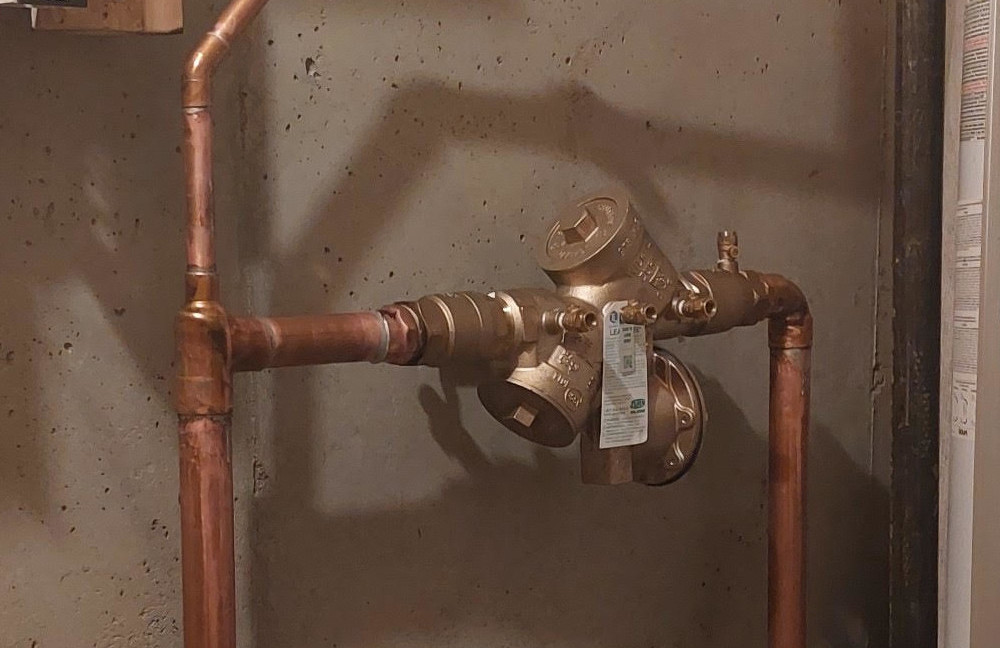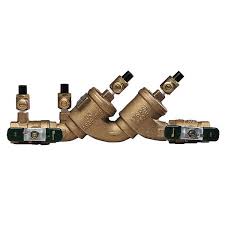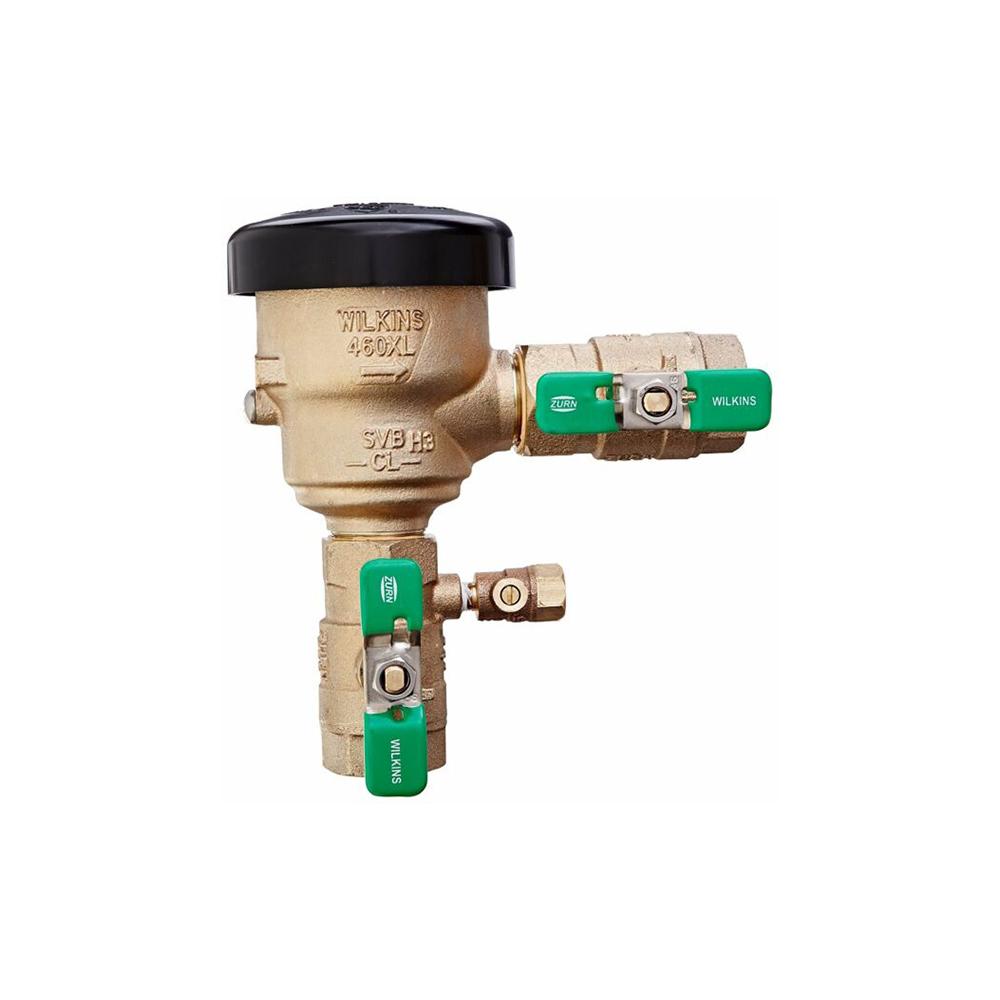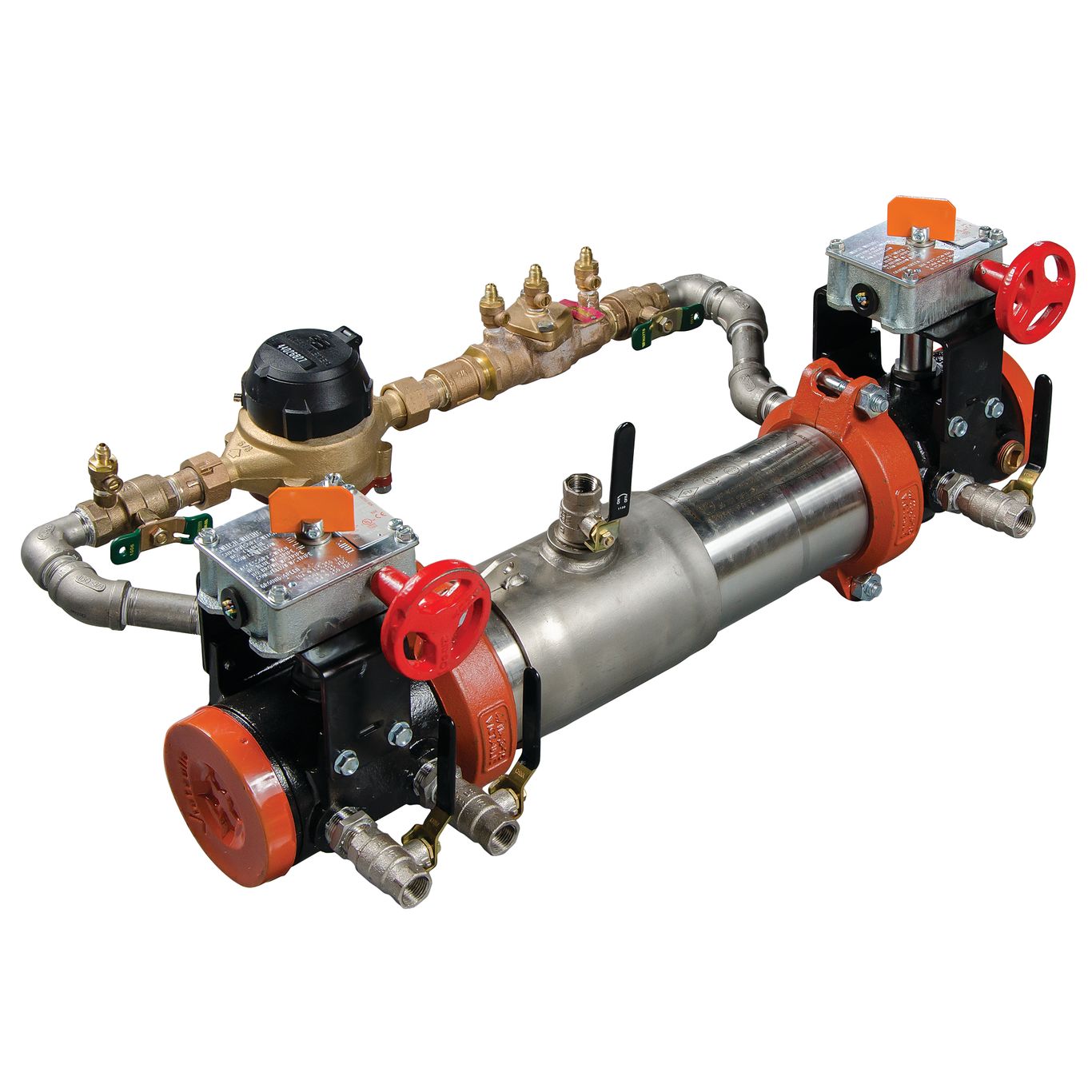Types of Backflow Assemblies
On this page, we are going to cover the four different types of approved and testable backflow prevention assemblies as well as variations of the reduced pressure principle backflow assembly (RP) and the double check valve backflow assembly (DC). We won't be going into too much detail about the mechanics of each assembly but will detail common installation situations.

The RP:
The RP, or reduced pressure principle backflow assembly, it the most common type of assembly installed on domestic and irrigation systems. It is essentially two check valves with and intermediate differential pressure relief valve. They are designed to release water under certain situations and drainage is required for such discharge.
RP's are also commonly called:
- RPBA
- RPZ
- RPA
Most common applications:
- Domestic Water Service - Commercial Properties
- Irrigation Systems - Residential and Commercial
- Fire Suppression Systems - Glycol/Chemicals Added
- Boiler Makeup Water Supplies
- Chiller Water Supplies
- Soda Machines (Stainless Steel Models Only)
By in large, the RP is the most versatile type of backflow prevention and because of that, many water purveyors have adopted "RP Only" requirements for their cross-connection control problem. This is a double edged sword because it has the highest protection rating (outside of an air gap), but it is also the most expensive to install. Some installations will have to have systems installed to collect and pump out the water being discharged from the relief valve.

The DC:
The DC, or double check valve backflow assembly, are two testable check valves in series. A check valve allow fluids to flow in one direction only. The DC looks very similar to an RP except that it does not have a differential pressure relief valve. Because of the lack of relief valve, the DC is rated for non-health hazards only. This basically restricts them to fire suppression systems that do not have anti-freeze, foam or other chemicals introduced.
Double checks are not to be confused with dual checks. While both are backflow preventers, double checks are testable assemblies whereas dual checks are untestable devices.
RP's are also commonly called:
- DCA
- DCBA
Most common applications:
- Fire Suppression Systems - No Anti-freeze, foam or chemicals
- Some commercial domestic water containment
Because of the limited use of double check valve assemblies, some water purveyors have eliminated them from their cross-connection control policy; meaning that while they are approved backflow prevention assemblies, they cannot be installed.
Before installing a DC, be sure to check with your water purveyor to ensure they allow them for each application.

The PVB:
The PVB, or pressure vacuum breaker backflow assembly, is a limited use backflow assembly. Most commonly, they are found on residential irrigation systems, but even then, they are restricted as to if they can be installed.
The PVB has several installation restrictions. The first is a height restriction. The assembly must be a minimum 12 inches above the highest fixture in a system. It must also be a minimum 6" above grade and a maximum of 60" above grade. This means that a maximum of 4 feet of incline can occur between the backflow assembly and the highest fixture it will be protecting again.
The other restriction regarding the installation of a pressure vacuum breaker is that they cannot be subject to backpressure, which is one of the types of backflow. Backpressure happens when the demand pressure becomes higher than the supply pressure. This is most common due to elevation differences, pumps, thermal exansions, etc.
Because of the limitations on where and when they can be installed, many water purveyors have discontinued the use of PVB's within their jurisdiction. In some case, they may have grandfathered in existing PVB's but upon replacement, they must be converted to RP's.
Before installing a PVB, be sure to check with your water purveyor to ensure they allow them for each application.

The SVB:
The SVB, or spill resistant pressure vacuum breaker, is another testable vacuum breaker but is designed for situations where the environment needs to stay dry. PVB's are designed to allow water to flush through the air inlet in the event of supply side pressure loss. SVB's work a little different.
Environments that may require an SVB are labs, dialysis machines, manufacturing, etc. In fact, the misters spraying the fruit and veggies in the produce sections more than likely have backflow protection in the form of an SVB.
SVB's are limited in use in the same way that PVB's are. Must be 12" higher than the highest fixture being served and cannot be subjected to backpressure.
SVB's can be used in place of a PVB on an irrigation system but the costs between make SVB's less economically feasible. SVB's are typically double or triple the cost of a standard pressure vacuum breaker.
Because of the limitations on where and when they can be installed, many water purveyors have discontinued the use of SVB's within their jurisdiction. In some case, they may have grandfathered in existing SVB's but upon replacement, they must be converted to RP's.
Before installing an SVB, be sure to check with your water purveyor to ensure they allow them for each application.

Detector Assemblies:
The RPDA and RPDA-II, RP detector assembly and RP Type II detector assembly (respectively), and the DCDA and DCDA-II, DC detector assembly and DC Type II detector assembly (respectively), are variations of the RP's and DC's. The standard detector assemblies have primary assemblies and then have low flow bypasses with additional backflow assemblies. The Type II detector assembly is reduced down to just a low flow bypass and a single check in parallel to the #2 check valve of the primary assembly. In all cases, the bypass has a meter installed on it to detect unauthorized use of the downstream water.
Typically, these are only installed on systems that are permanently in a static pressure state; meaning water is not supposed to be regularly flowing through the system. Easiest example is a fire suppression system. If no water is flowing, it means there is no fire and everyone is safe.
Because these systems are meant to be in a static state, water purveyors want to be able to detect to see if there is any unauthorized water usage in the system. It may be from a leak or because someone thought it would be a good idea to tap off those particular pipes in order to have running water. Therefore, th ewawter purveyor may require a detector assembly.
Detector assemblies are becoming increasingly popular among water districts because of the meter tracking. Type I detector assemblies are universally accepted whereas Type II detector assemblies are steadily finding their feet in the door. Some water purveyors are still skeptical about Type II assemblies despite them providing the same level of protection as a Type I.
If you find yourself in a position that a detector assembly is required to be installed, be sure to speak with your water purveyor to see if they allow both Type I and Type II detector assemblies. A Type II may be cheaper upfront and down the road because maintainance is reduced.